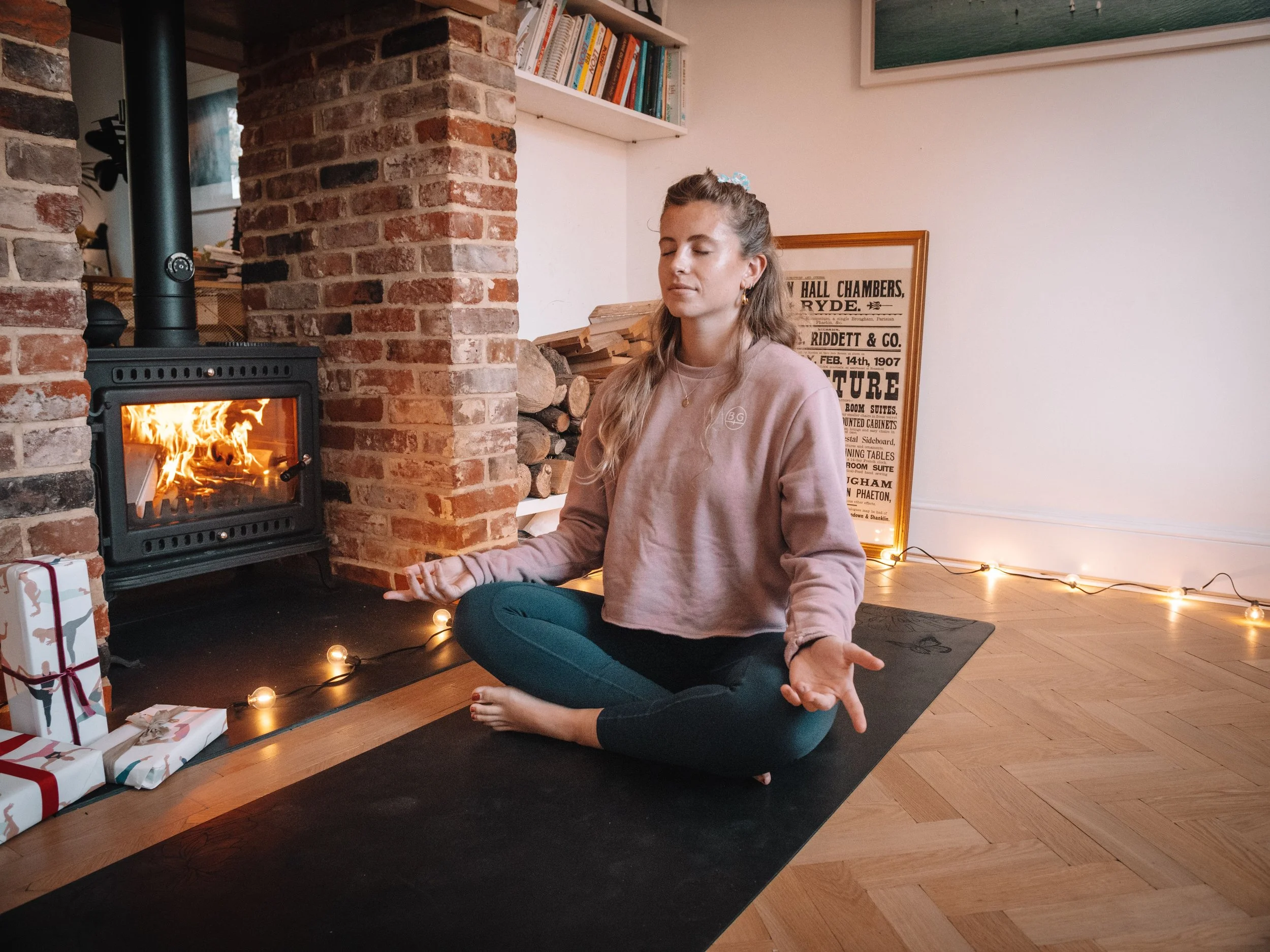YOGA PHILOSOPHY - SAUCHA
Balance + Glo Yoga Teacher Olivia Hazlitt takes you through one of the Yoga Philosophy principles of Saucha (cleanliness) and how it can help your practice, and by default, your life.
The Niyamas
One of Patanjali’s Eight Limbs of Yoga are the Niyamas. The Niyamas are a set of observances designed to help your relationship to yourself. The five Niyamas are;
1. Saucha (cleanliness)
2. Santosha (contentment)
3. Tapas (discipline)
4. Savdhyaya (self-study)
5. Isvara Pranidhana (surrendering to a higher power)
In this blog post I will be exploring the first Niyama: Saucha.
Saucha means cleanliness of body, mind, spirit, and surroundings all moving towards great peace. The practice of Saucha (cleanliness) will allow us to approach our Asana (physical practice), Meditation and Pranayama practice with a clear intention.
Saucha in the physical sense
The phrase “tidy space, tidy mind” springs to mind when I’m thinking of Saucha. In your asana practice you will often hear your teacher attempting to bring you back to the present moment. A key element of a yoga practice is focus. Particularly if you have a home yoga practice, focus is not always the easiest skill to tune, this is where Saucha comes in. If you are practicing an on demand or zoom yoga class and there’s that pile of washing up or dog toys a metre away from your mat you can be sure that your mind will wander there at least once in your practice.
We go to a Yoga class to declutter the mind so decluttering your space is an essential prelude to practice. Resist the temptation to log on at the last minute and take 2 or 3 minutes to clear your yoga space. Lighting a candle or spritzing a calming scent is another way of signalling to the brain that it is time for practice. Using the same scent every time will help your sensory memory to allow you to concentrate on your practice with more ease. Olfaction (the physiologic process of the nasal airway) is closely linked to the limbic (memory) system of the brain. (The Harvard Gazette)
Palo Santo
I love to use Palo Santo at the beginning and towards the end of my classes when I teach + practice. Palo santo is a traditional remedy for pain, inflammation, and stress. It's also used to clear out negative energy.
You have to be careful where you source your Palo Santo as the signature scent is created by a tree that has been dead for several years. I recommend St Palo;
“Our Palo Santo oil is from sustainably harvested trees that fall naturally in the forest. The local suppliers propagate and replant more gorgeous Palo Santo trees with their profits.”
A sign of respect
Not only will this reduction in visual stimuli help you concentrate during your class, but it is a sign of respect to this ancient practice. When you practice yoga, you are tapping into the same life-force energy (prana) in each of us and all the natural world around. When you attend a shala or studio it is respectful to take your shoes off at the door. Show your own yoga space the same respect and ultimately extends to self-respect too.
When you show appreciation and care for something else whether that be your practice your possessions or teacher that behaviour will be reflected in your own self-esteem. Simply showing up to your practice is a great sign of self-appreciation and should be reflected upon.
If you are practicing with a group, make sure you keep your space as clear as possible. This means that the teacher or other practitioners won’t encounter any obstacles to their own delivery or practice in the class. Remember: your energy is infectious – if you bring your chaos into class, it’ll affect your neighbour.
Energetic Saucha
Speaking of infectious energy, you may be familiar with the phrase “where attention goes, energy flows”. In the same way you might clear your physical space before you practice it’s a good idea to check in with your habits & thought patterns.
This is not to encourage toxic positivity, but it is true the more we direct our thoughts towards positivity the more positivity we can add to our lives.
It is important to honour every emotion and allow yourself to feel but if you notice your mind trending towards self-deprecation or judgement of yourself and others it’s time to intervene.
You have the power to observe and change the habits established in your mind. For example, you wake up one day feeling particularly judgemental of yourself having just had the flu. You arrive to your mat with frustration that you can’t breathe properly or don’t have the energy levels to attempt the more “advanced” asanas being offered by your teacher. This attitude of frustration will not make you feel better. Instead, can you flip the narrative;
“I’m so grateful that I can adapt my yoga practice to suit my energy levels”
“I am choosing to support my body during the healing process”
“Yoga is more than asana, I dedicate this practice to focus”
“I am grateful for what my body does for me”
Another example of this would be to judge someone else in your class. How you view others is a direction reflection on how you view yourself – watch these thoughts and let them go!
Keep Reading
How to Balance the Heart Chakra
Chakra can be translated to “wheel” from Sanskrit and is the term to describe the seven, spinning points of energy up the spine. The first is Muladhara, root chakra, located right at the base of the spine and the last is Sahasrara, crown chakra, at the top of the head.
The chakras together form an energetic system in the subtle body and each are connected to a gland and specific characteristics.






